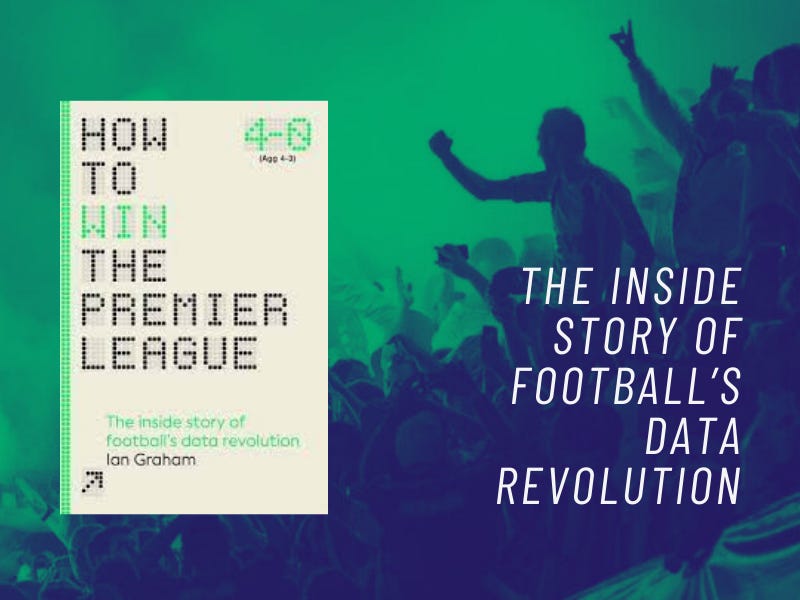What’s It About?
For over a decade, Dr Ian Graham led the data analysis team at Liverpool FC. During that period the club was transformed into one where all decisions were data driven placing Graham at the heart of the action. And, through this book, he shares how all of that was achieved.
Sounds Good. Tell Me More!
It is not often that fans get to opportunity of a glimpse into what actually happens at a football club. Player and manager biographies do occasionally offer some insight but often they try to focus on the more salacious stories that tend to boost sales.
This is different. Ian Graham does not form part of the traditional football fraternity – indeed you get the distinct impression that even at a club like Liverpool data analysts are seen as something of an intruder – but he is definitely someone who has shaped the club’s trajectory. It says much about how the game has evolved that he, like Michael Edwards and Barry Hunter, has become a familiar name among Liverpool fans.
That popularity is largely down to how the club went about building the squad that achieved such heights under Jurgen Klopp. Sure, big money was spent on Alisson and Virgil Van Dyke, but the rest of the squad was put together by making bets that many others weren’t willing to take. Andy Robertson and Gini Wijnaldum signed from a relegated side. Sadio Mane bought from Southampton despite a supposedly problematic character. And, of course, Mohammed Salah brought back to English football despite being a failure at Chelsea.
All of those signings went through the usual scouting sieve and made with Klopp’s blessing. Yet, crucially, they were transfers approved by the data team that Graham led. His work shaped the strategy and dictated which players were the best fit for Liverpool’s system.
That’s what makes this book particularly interesting. Graham seems to have no qualms in describing both the circumstances and the reasoning behind most transfers. Although most rumours had since filtered through, it is always pleasing to have them confirmed.
Not that How To Win The Premier League is missing the headline making titbits that push up sales. Graham never speaks badly of Brendan Rodgers – in fact, he always provides some justification for his actions – yet the Northern Irishman’s strong headedness when it comes to signing players is clearly laid out in these pages. From blindsiding those running the club by making it clear in his introductory press-conference that he wouldn’t work with a sporting director to his dogged pursuit of Christian Benteke, Graham shares the gossip that confirms what most fans had assumed about Rodgers.
Headline grabbing though such revelations might be, what’s more interesting are the titbits that reveal how Liverpool came to form their data theories. Theirs was an iterative system where poor decisions were analysed and learned from. The signing of Lazar Markovic taught them not to place to much weight on a league one which they didn’t have enough data. Similarly, the failed signings of Iago Aspas and Luis Alberto showed that they needed to dig deeper into the character of the potential new players.
Reading of those mishaps it is easy to wonder whether Liverpool’s success was down to their reliance on data to confirm decisions are purely the presence of a coach of Jurgen Klopp’s calibre. It is difficult to determine the weight of the data input had on those moves yet any club that keeps getting it right transfer window after transfer window – and Liverpool achieved precisely that – is bound to excel.
Data might not have been the only factor in their success but clearly it was an important one. And, if others want to replicate it, they now have a manual on how to do so.
Even So…
Just like Liverpool’s defence in Klopp’s early years, this book would have benefited with some tightening albeit, in this case, of the narrative. Far too often bits of the story are re-told at various points seemingly as if the author forgot that he had already mentioned them.
There is also a fair bit disconnect from one chapter to another, particularly towards the end. Some chapters – such as the debate about who is better between Cristiano Ronaldo and Lionel Messi – seem to be thrown in purely to add a bit of heft to the book. I’m sure there are people out there for whom this debate is interesting but I’m not one of them.
I still enjoyed reading this quite a bit, but I have to admit that there were a couple of parts that I skipped over completely.
Final Score
Many have written about the data revolution that has washed over football in recent years. None of those books, however, were penned by someone who was at the heart of one of the most admired data departments in the football world.
Purely for that, this is worth reading. Yet this is not merely Graham’s way of patting his own back whilst making some money off his experiences (although there is that as well); this is a genuine attempt to share what went on at Liverpool and educate the wider fan base on some of the finer points of data analysis.



